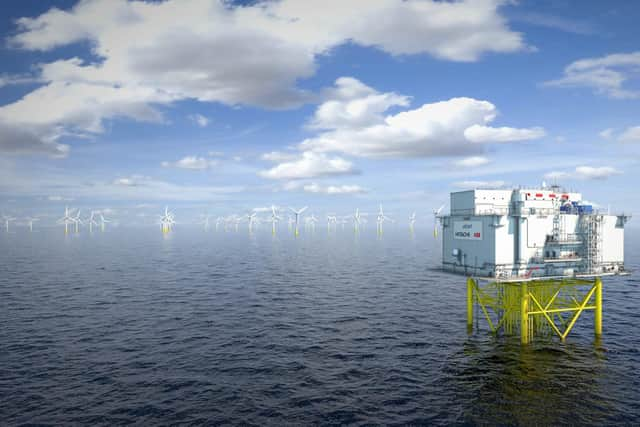SSE warns of delay to world’s largest offshore wind farm as renewable output hit by storms
Energy giant SSE has seen its renewables output slump as weather disruption and a series of named storms affected wind farm operations.
The Perth-headquartered power generator said output from renewable sources was around 15 per cent below original expectations for the first three quarters of its financial year and 10 per cent lower than full-year expectations. It said it had been impacted by a combination of “mixed weather conditions”, including ten storms in the third quarter, short-term plant outages and a rephasing of hydro output into the fourth quarter. The effects of the mixed weather continued into January, SSE added.
Advertisement
Hide AdAdvertisement
Hide AdAs well as a lack of wind impacting output, wind farms can be affected by very stormy or hurricane conditions when some designs of turbines require to be shut down to prevent damage.


SSE also warned that the full opening of the world’s largest offshore wind farm, off the north-east coast of England, could be delayed. It said that bad weather and delays in its supply chains could push the full operations of the Dogger Bank A site into 2025. The giant facility had originally started producing its first power in October last year, with commercial operations set to start this year.
However, in its trading update SSE also pleased investors by maintaining its earnings per share guidance for the full year to March at 150p. It said “positive UK government policy announcements” further underlined the strength of its networks, renewables and flexibility project pipeline. The group, which is one of Europe’s biggest constructors of offshore wind, remains on course to deliver capital expenditure in the region of £2.5 billion across the financial year, with billions of further investment in the pipeline.
Chief financial officer Barry O’Regan said: “Whilst the quarter has seen the business navigate some short-term challenges, we reiterate and continue to focus on the delivery of our 2027 financial and operational growth targets. The strength of our balanced business mix and the growth opportunity it provides is aligned with a policy environment which increasingly recognises the essential role renewables, electricity networks and flexible power will play in the energy system of the future.”
Aarin Chiekrie, equity analyst at financial platform Hargreaves Lansdown, suggested that renewable energy may not be “as reliable as hoped”, noting: “The group’s five-year investment budget still stands at a lofty £20.5bn, which is more than its current market value. Around 90 per cent of this budget has been earmarked to build out its electricity networks and renewables infrastructure, turbo-charging the move towards a greener future. But the move comes with a hefty dose of risk as its renewable energy generation isn’t always reliable.”
The Dogger Bank site is going to be built in three phases, each with nearly 100 wind turbines and supplying 1.2 gigawatts (GW) of wind capacity. By 2026 it is expected to be powering around six million homes per year. The companies behind it, SSE and Equinor, are also exploring the potential for a fourth phase, which could increase its capacity even further.
Comments
Want to join the conversation? Please or to comment on this article.